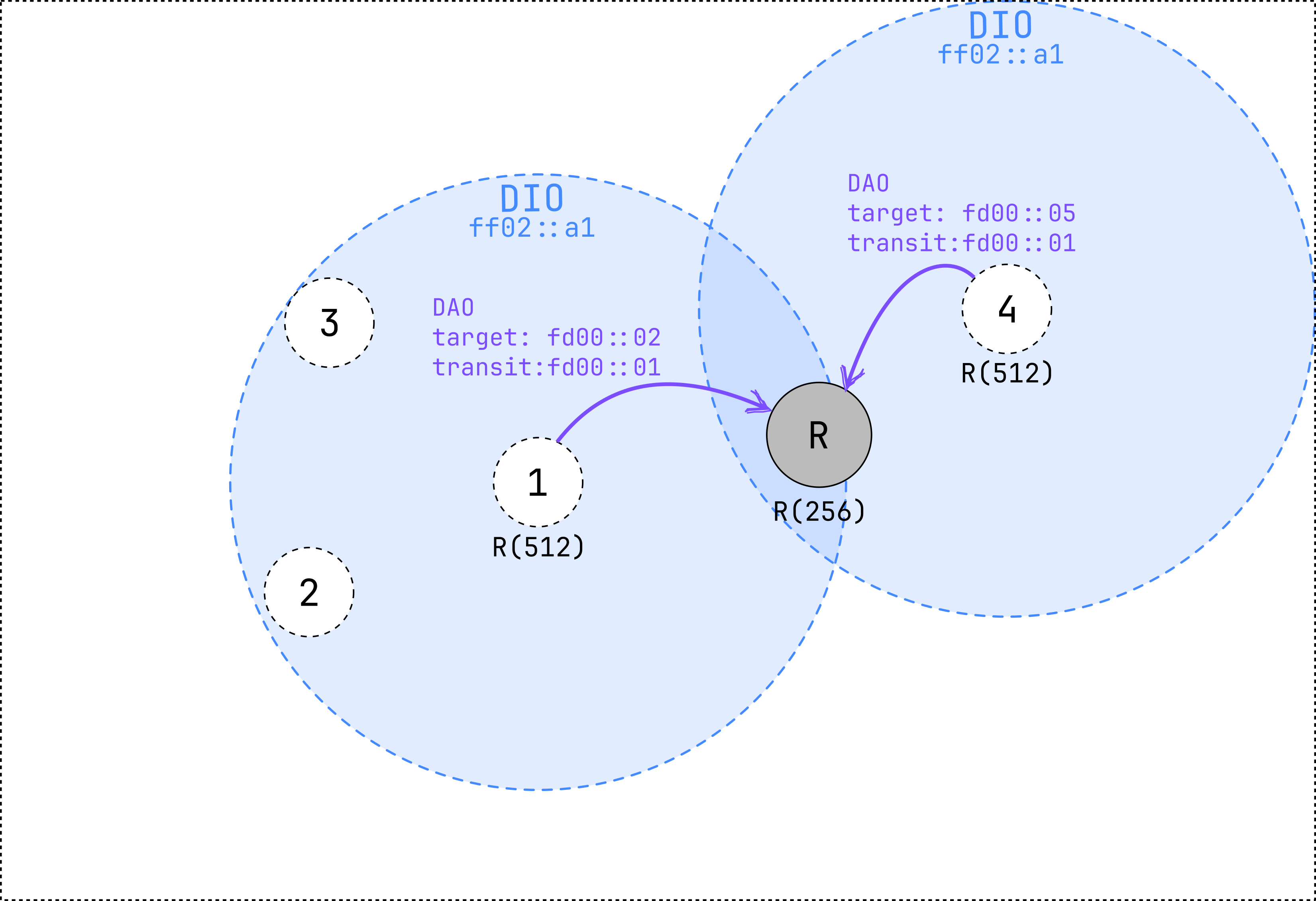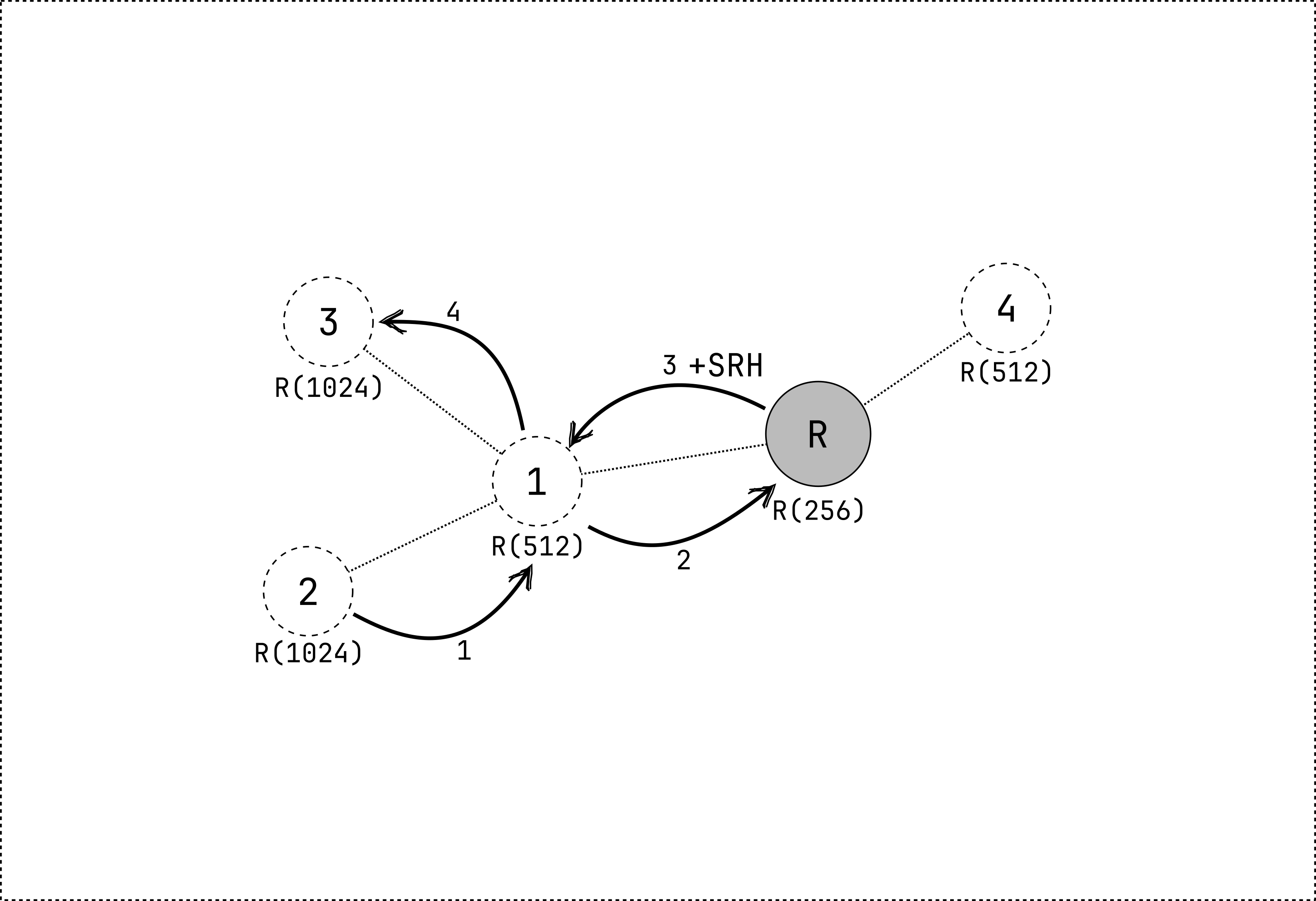MOP1: non-storing mode
In this mode of operation, the network is configured such that both upward and downward routes are established. This means that the root can send data packets to the nodes in the network and that any node in the network can transmit messages to any other node.
RPL network formation
The formation of the network is done in the same way as in MOP 0. However, in MOP 1 the DAO messages are sent to the root when joining the network. The root will answer with a DAO-ACK message, if requested by the DAO message.
A DAO message contains information about the parent of the node. The address of the preferred parent is transmitted in the Transit Information RPL option of the DAO message. The address of the child is transmitted in the Target RPL option of the DAO message.
When the root receives a DAO message, it will add the address of the child to its routing table together with the address of the parent. When the network is formed, the root has a complete overview of the network topology.
 Figure 1: node 1 and 4 send a DAO message to the root after joining the network.
Figure 1: node 1 and 4 send a DAO message to the root after joining the network.
Nodes can now send data packets to any other node in the network. First, the packet is sent to the parent of the node until it reaches the root. The root will then add a source routing header (SRH) to the packet. The SRH contains the path that the packet needs to follow toward the destination. It is constructed by the root based on the routing table.
Node 2 transmits a packet to node 3 (imagine that node 3 is not in range of node 2).
- The packet is first transmitted to the preferred parent of node 2 (node 1).
- Since node 1 is not the root, it will forward the packet to its preferred parent (the root).
- The root will add a source routing header to the packet and send it to node 1.
- Node 1 uses the source routing header to transmit the packet to node 3.

Maintainance of the network
Just like in MOP 0, the network is maintained by sending DIO messages based on the Trickle timer. However, routes also need to be maintained. This is done by sending DAO messages to the root. The root increments the DTSN in its DIO messages. When a node receives a DIO message with a higher DTSN, it will send a DAO message to the root. In smoltcp, nodes periodically send DAO messages to the root, without waiting for a DIO message with a higher DTSN.
Usage with smoltcp
The RPL network can be formed using the smoltcp library.
The following feature flags need to be enabled: rpl-mop-1 and proto-sixlowpan.
Additionally, the proto-sixlowpan-fragmentation feature can be enabled to allow for fragmentation of 6LoWPAN packets.
The following configuration should be added to the configuration struct for the interface:
#![allow(unused)] fn main() { config.rpl = RplConfig::new(RplModeOfOperation::NonStoringMode); }
When using RPL as a root node, the following configuration should be added:
#![allow(unused)] fn main() { config.rpl = RplConfig::new(RplModeOfOperation::NonStoringMode) .add_root_config(RplRootConfig::new( RplInstanceId::from(30), // Change this to the desired RPL Instance ID Ipv6Address::default(), // Change this to the desired DODAG ID )); }
The interface should now behave like a RPL node in MOP1.
Summary
- Network is formed by sending DIO messages
- When a node joins the network, it sends a DAO message to the root
- The root answers with a DAO-ACK message (if requested)
- The root has a complete overview of the network topology
- Nodes can send data packets to any other node in the network
- The root adds a source routing header (SRH) to downward packets